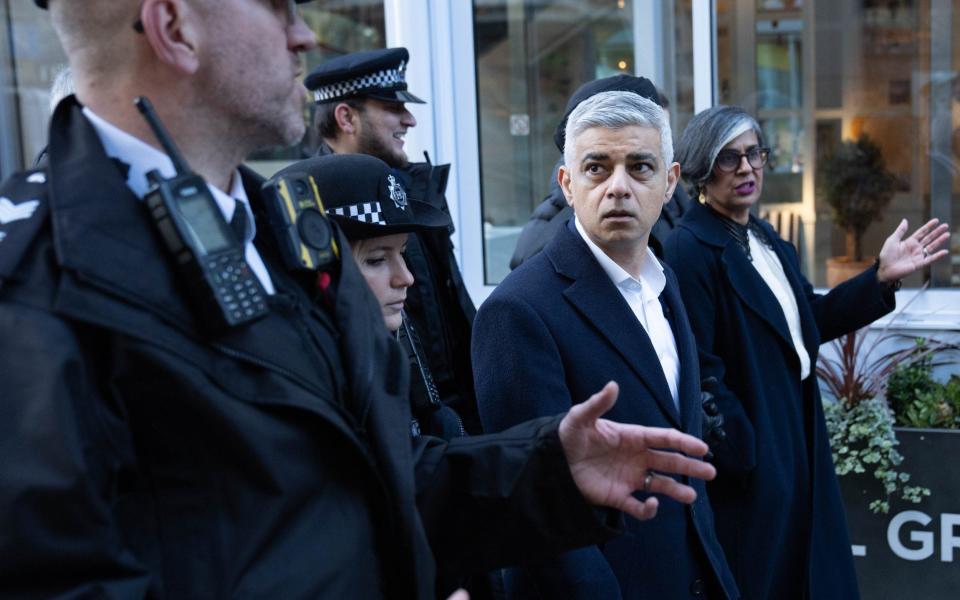Police officers are increasingly required to use force to restrain violent children amid a surge in knife crime, official figures show.
The number of cases where police had to deploy force to restrain children, including those under the age of 11, increased by more than 14 per cent from 74,470 in the year to March 2023 to 85,148 in the year to March 2024. This is more than double the 29,000 incidents when the Home Office first started collecting police use of force data in 2017/18.
It included 546 cases where officers had to draw firearms in order to restrain in the past year. Other tactics included Tasers, handcuffs, spit guards and physical force. Among the children were nearly 900 who were under 11.
Advertisement
Advertisement
It comes as the proportion of children saying they have been victims of violence in the past year has increased sharply and knife crime is on the cusp of returning to its pre-pandemic peak.
Nationally the number of police-recorded knife crime offences – which include the use of the weapons in murder, rape, robbery and threats to kill – have risen 3.6 per cent from 49, 187 to 50,973. The only previous time the annual figures passed 50,000 was in 2020 when it reached 51,982.

In London, where Sadiq Khan is mayor, knife crime has already hit a record high – Stefan Rousseau/PA
In London, where mayor Sadiq Khan was knighted in the New Year’s honours, knife crime has already hit a record high of 15,859 in the year to June 2024, up 16 per cent on the previous year, according to the Office for National Statistics.
Jon Yates, executive director of the Youth Endowment Fund (YEF), which is backed by the Government to combat youth violence, said: “While the vast majority of police use of force is against adults, increasing use of force against children should trouble us.
Advertisement
Advertisement
“This Government has committed to halve knife crime. That requires police action but it also requires targeted support for troubled children. We need mentors and therapists – working with those who most need it to prevent the violence in the first place.”

The data show that overall incidents including adults where police had to use force jumped by 13.3 per cent to a record high of 747,396 – equivalent to more than 2,000 a day. These involved the deployment of more than one million different tactics for the first time ranging from use of firearms to handcuffs and physical restraint.
Almost half (48 per cent) of use of force reports involved people aged 18 to 34 years (361,460 incidents). One in nine (11 per cent) or 85,148, however, involved children aged 17 and under. Of these, 885 were aged under 11 (equivalent to one 1000 or 0.1 per cent of all police use of force reports).
The majority (88 per cent) of the tactics where force was used by police involved restraint or unarmed skills. However, more than in 10 incidents involved firearms, handcuffs or other physical restraint measures.
Advertisement
Advertisement
More in World
One in five (20 per cent) children have been victims of violence in the past 12 months, up from 16 per cent in the previous year and 14 per cent in 2022, according to a study of 10,000 13- to 17-year-olds by the YEF, which was endowed by the Home Office to invest £200 million in tackling youth violence.
More than half of the incidences (61 per cent) of violence involving the children resulted in physical injury, equivalent to 440,000 children in England and Wales. One in 20 said it involved a weapon, while two thirds said they had been attacked multiple times.
One in 20 (5 per cent) of those surveyed said they had carried a weapon in the past year. One in 50 (2 per cent) said that they carried a knife.
One in six (17 per cent) of those who had carried weapons said they had done it with zombie-style knives or machetes. Other items included screwdrivers, sticks or clubs. Younger teenagers, aged 13 to 15, were more likely to carry weapons compared to those aged 16 to 17, according to the research.
Advertisement
Advertisement
“Too many young lives are lost or scarred by violence. It is not OK that almost nine out of 10 children who commit violent acts get no support at all. We must do better at spotting which children need help and providing them with evidence-based support to change things and save lives,” said Mr Yates.
EMEA Tribune is not involved in this news article, it is taken from our partners and or from the News Agencies. Copyright and Credit go to the News Agencies, email news@emeatribune.com Follow our WhatsApp verified Channel




